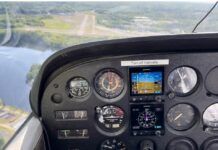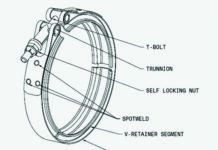If you have a Superior Air Parts Inc. model IO-360/O-360 or a Lycoming 360-series under the cowling, you’ve likely been watching the proposed AD for the crankshaft used in some of these engines. The Superior Air Parts crankshaft is installed as an original-equipment component, and also as a PMA replacement part on affected Lycoming engines. As anticipated, the final ruling is an AD (AD-2020-25), and is effective Jan. 15, 2021.
The AD was prompted by three crankshaft assembly failures in training aircraft that resulted in loss of power and immediate or emergency landings. The FAA has determined that the crankshaft failures were the result of a manufacturing problem that dates back to production runs in 2012 and 2015. According to the FAA, the build process induced an excessive residual layer of iron nitrate that formed on the crankshaft assembly. The layer of iron nitrate becomes brittle and can ultimately lead to spalling and fatigue cracking of the crank, says the FAA. The FAA determined that all three engine failures were the result of this fatigue cracking.
VERSUS LAB REPORTS
Lots of disagreements here. The FAA fielded comments from Superior Air Parts, AOPA and individuals requesting to tap the brakes on the AD until more data can be collected. According to Superior Air Parts, the data from an independent test lab does not support the theory that the crank failures were the result of residual iron nitride. According to the AD, the company went as far to say that the fractured crankshafts were all within specification, and the heat treatment and materials used matched the engineering requirements consistent with the cranks used in other GA piston engines. The FAA disagrees. In examining the stress cracking of the failed cranks, the FAA says an independent lab analysis found a continuous white layer of residue at the surface of the radius extending up to the location of the fracture, and that the layer of residue may have contributed to early cracks forming. Another lab report on a different failed crank concluded that the continuous white layer of residue at the surface of the forward journal radius was a mere 0.0001 inches. The FAA disagrees with that analysis, saying that the white layer’s thickness was actually 0.0009 inches—exceeding the amount allowed by the OEM.
According to Superior Air Parts, the presence of this white layer of residual iron nitrate does not reduce the fatigue resistance, but instead actually increases it by as much as 25 percent. The FAA points out in its AD that the white layer is well-established to be a problem because it’s brittle and that the OEM removes the white layer of debris during manufacturing.
At press time, Superior Air Parts said it has assembled a team of metallurgists and engineers to work with the FAA and AOPA to develop an alternate means of compliance at a significantly lower cost than shotgunning the cranks in some 257 360-series engines. As it stands now, complying with the AD by replacing the crank must be accomplished within 25 hours of service.
We’ll keep tabs on this and report on any changes and updates.





